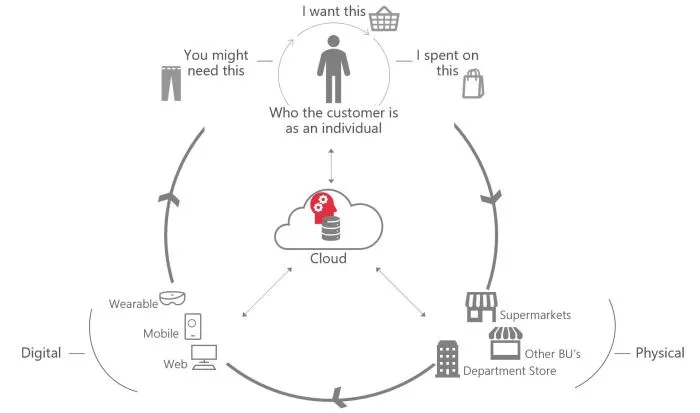Retail Digital Transformation
Blog: End to End BPM
In the last 7 to 5 years an unprecedent shift occurred in the way consumers interact with retail companies. Consumers complete transactions either online or in-store. Consumers still buy goods at physical stores and switch from physical to digital and back to physical. Contrary of what we may think – and this is also confirmed by retail customers with international presence I am working with – stores continue to contribute almost half of all retail growth; brick-and-mortar sales are not shrinking, but actually growing [1].
Hence, the big question is, where it relies the difference on how we interact and sell, if everyone is doing the same and copy the approaches? Where it lies the competitive advance of doing it differently?
Make a difference means mastering the art of:
- In-store experience: is related with virtual shopping assistants, with sensing emotions by analyzing expressions related with prices, promotions and the products offered, mixed reality, which the customer can experience the product virtually or get more features by connecting to his personal profile and discover if there is a match. By recognizing and interpreting facial, biometric and audio expressions, new artificial intelligence technologies can identity customers emotions, reactions or mood and deliver contextualized products, recommendations or support – by the use of bots, that use natural language processing to help customers effortlessly navigate questions (“is this size or color available?”; “Can I ship back home the products while I am going to watch a movie?” — improving the customer experience.
- e-commerce: providing a mobile app is not enough, actually, there is being sensed that there is a point of saturation about using apps because all of them do exactly the same which most of the time is a simplified version of the web site with a different form format. The next wave of innovation is related with prescription and recommendation engines. The customer will see the products and the offers that really matter to him based on the customer profile and combining other sources of external data which he expresses his needs and wants. Recognizing customers and customizing the e-retail experience to reflect their current context, previous purchases and shopping behavior. As customers look to build confidence in a purchase decision, automated assistants can help narrow down the selection by recommending products based on customers needs, preferences and lifestyle.

The data focused organization
The art of mastering data in the retail sector will be dependent on the collection of in-store data , product data , and customer data new data sources coming from experiences expanded by the art of the possible using artificial intelligence.
Other key challenge is how to create and expand an ecosystem, a business ecosystem [2], like its biological counterpart, gradually moves from a random collection of elements to a more structured community, adding more partners, more products, more offers and enlarging the customer base. In a business ecosystem, companies coevolve capabilities around a new innovation: they work cooperatively and competitively to support new products, satisfy customer needs, and eventually incorporate the next round of innovations [2]. Of one key success of Amazon is how they grow in terms of product offerings. They started as book store. Today, they sell virtually anything.
In business ecosystems, a smart company manages information and its flows. In terms of data, this is not about our view of customer, that can be expanded how each partner that belongs to ecosystem increases that view of the customer and how it detects new opportunities by having access to a much more bigger customer and customer profile, alone or even partnering with other companies together. Retailers by being the anchor of such immense data lake, will monetize from each transaction occurred as all the other connected partners, the more the customer buys, the ecosystem grows as the business opportunities. On the other hand this will allow to evolve business capabilities. If a highly efficient logistics company joins the ecosystem, all the merchants can if they want benefit from the new innovative added capability, if a Retailer attract a fintech company to support new ways of doing payments, they will drive new interactions with millennials or digital savvy customers.
References:
[1] – The great retail bifurcation – Deloitte Consulting 2018
[2] – Predators and Prey A New Ecology of Competition – James F. Moore – Harvard Business Review